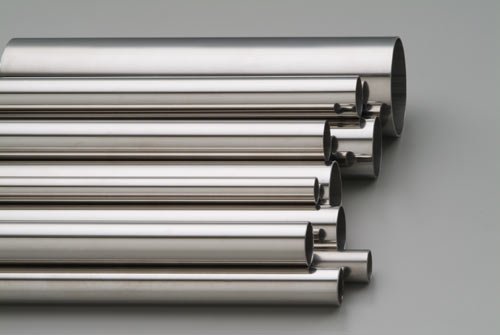1. Argon Arc Welding
Stainless steel pipes need penetrated welding without oxide impurities, having small heat-affected as possible. Argon arc welding has tungsten inert gas shield and has stable adaptability, superior welding quality, excellent penetration property, therefore the production has been widely applied in chemical, nuclear and food process industries.
The slow welding speed is the major shortcoming of argon arc welding. In order to improve its speed, foreign professionals have researched and developed various methods, among that, the multi-electrode & welding torch method, which is developed from single electrode welding torch method, was into the real practice. In 1970’s, the German manufactures firstly adopted the multi-electrode & welding torch method to form elongated heat flux distribution and the welding speed was quickened significantly. Today, the three-electrode welding torch is the most commonly used method, the wall thickness can be over 2mm, and the speed is three to four times faster than the single method, the welding quality is also been improved greatly. Argon arc welding combined with plasma arc welding, can weld pipes with thicker wall. Moreover, add 5 to 10 percents of hydrogen into argon, and using high frequency pulse welding power also can quickened the speed greatly.
The Argon Arc Welding is suitable for welding austenitic and ferritic stainless steel pipes.
2. High-frequency welding
High-frequency welding has more than 40 years history in carbon steel pipes, however, it’s new for stainless steel pipes. Its economical production makes the products extensively used in building decoration, household appliances and construction machinery fields.
The high-frequency welding has relatively high power capacity and can reach high welding speed for different material and wall thickness. Compared with argon arc welding, the maximum speed is more than 10 times. Thus, the high-frequency welding can improve the productivity of stainless steel pipes.
Due to its high speed, it’s difficult to remove the burr inside pipes, which is one of reasons that high-frequency welding is not accepted by the chemical and nuclear industry yet.
In terms of welding material, the high-frequency welding is suitable for various austenitic stainless steel pipes. At the same time, the development of new material and advancement of welding process, contribute to successful welding of AISI409 and other stainless steel material.
3. Combining welding technology
Every welding process has its own advantage and disadvantage. The new trend is to combine several welding process into a more advanced processing method to meet various requirements of quality and efficiency.
Through years research, combining welding technology has made some progress, Japan and France and other developed countries have mastered the combining welding technology.
Combining welding method including: argon arc welding & plasma arc welding, high frequency preheat & triple welding torch, high frequency preheat & plasma argon arc welding. The combining welding method has diversified advantages, such as fast welding speed, simple operation, automatic system and low cost etc.


